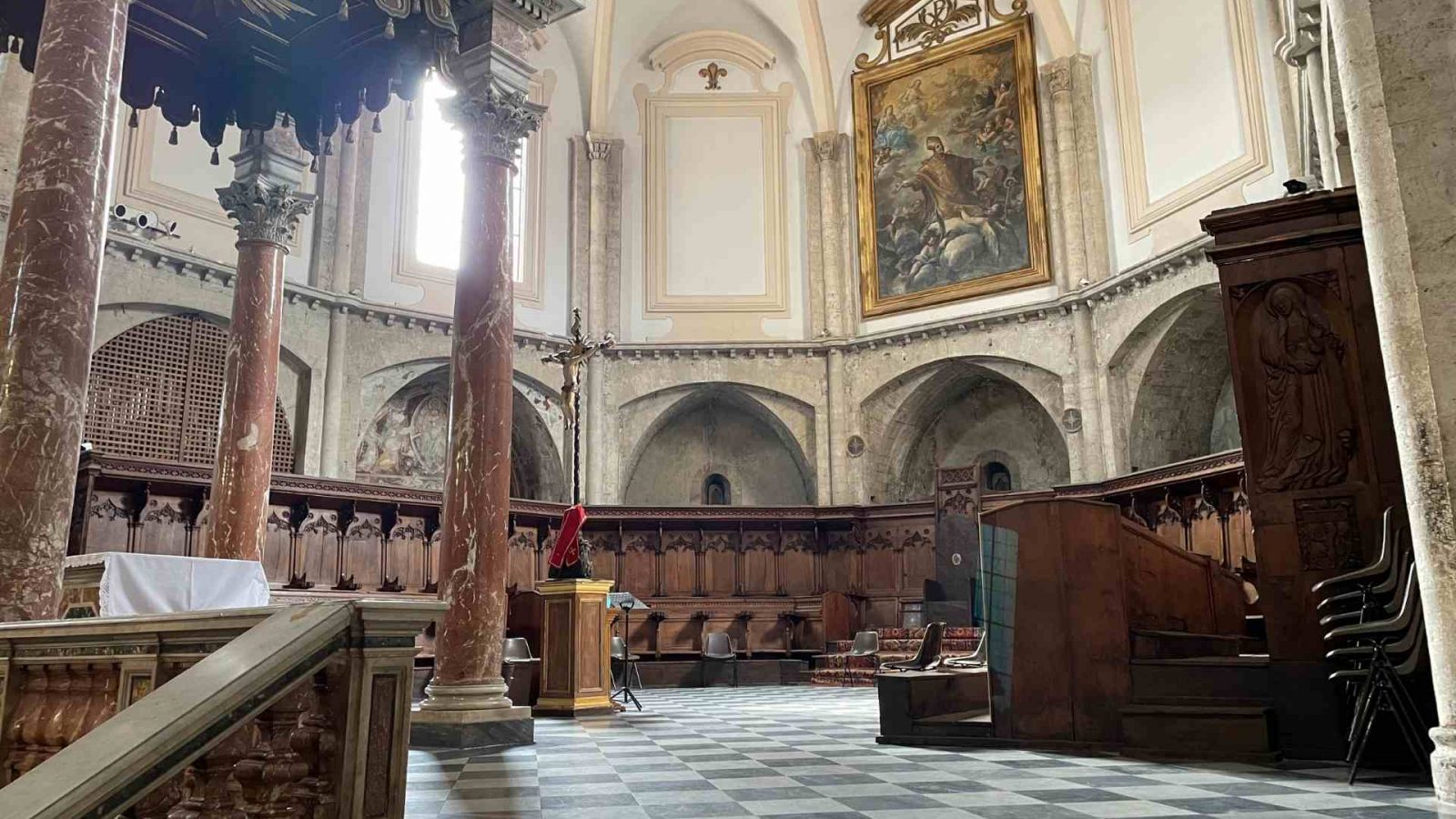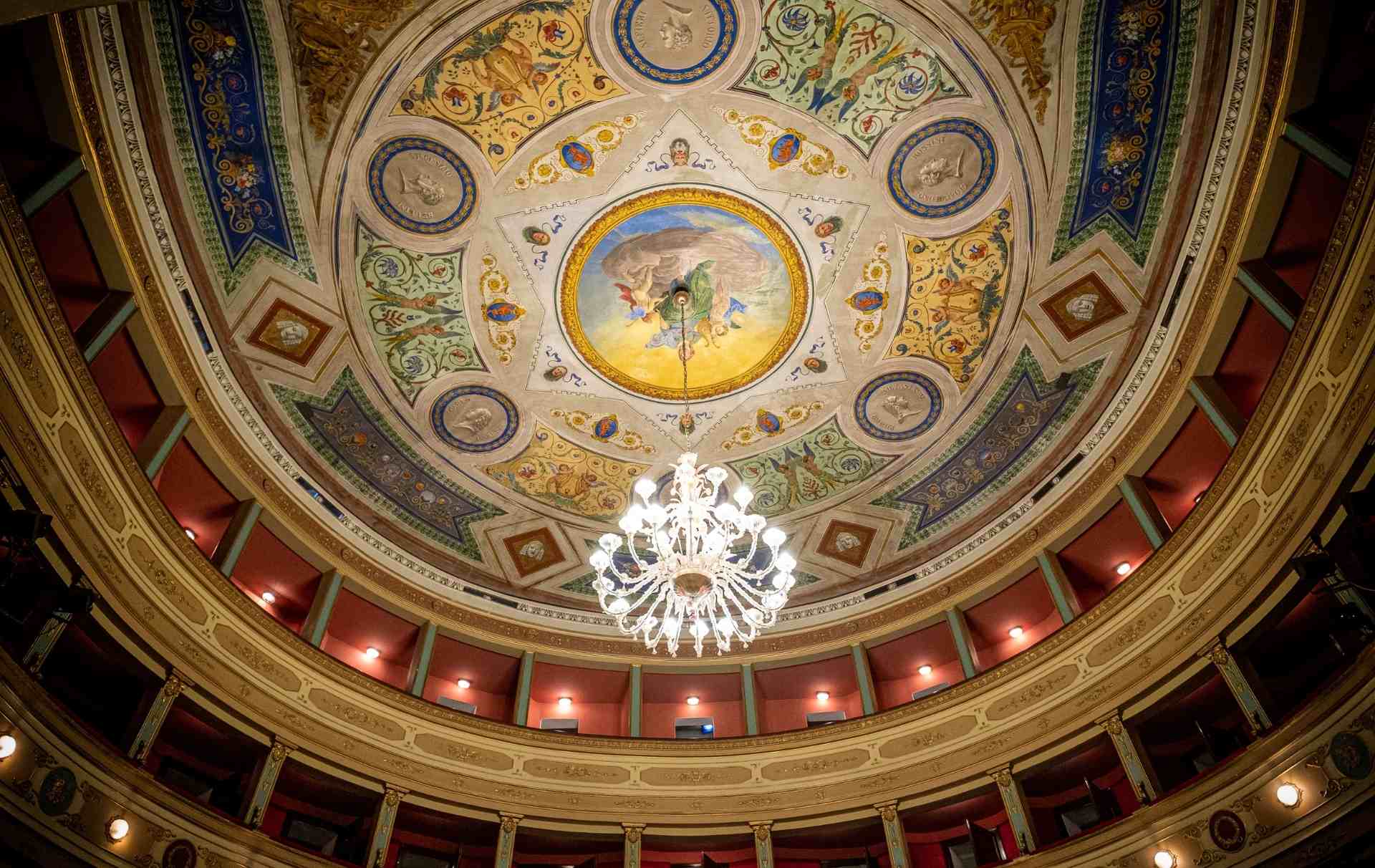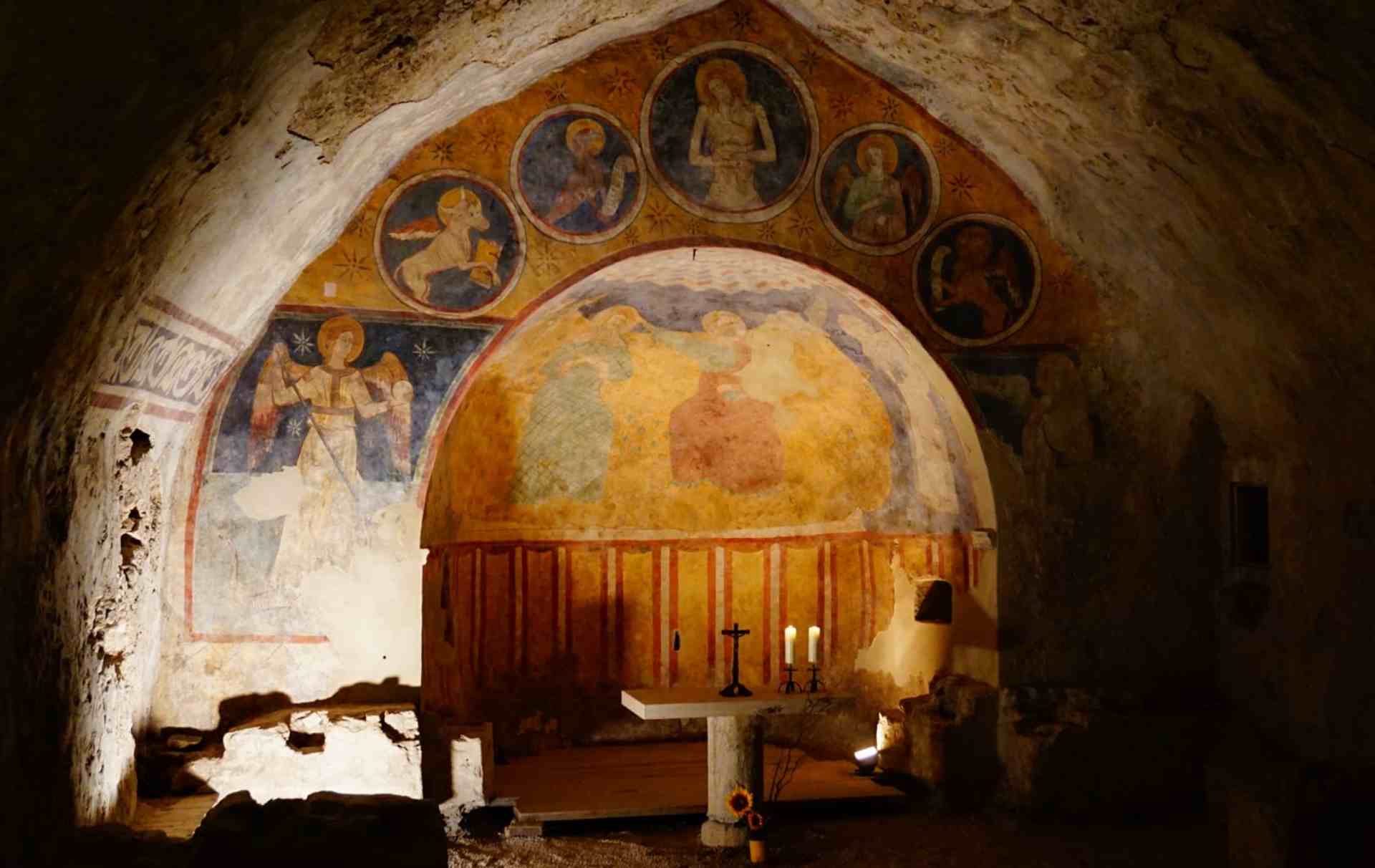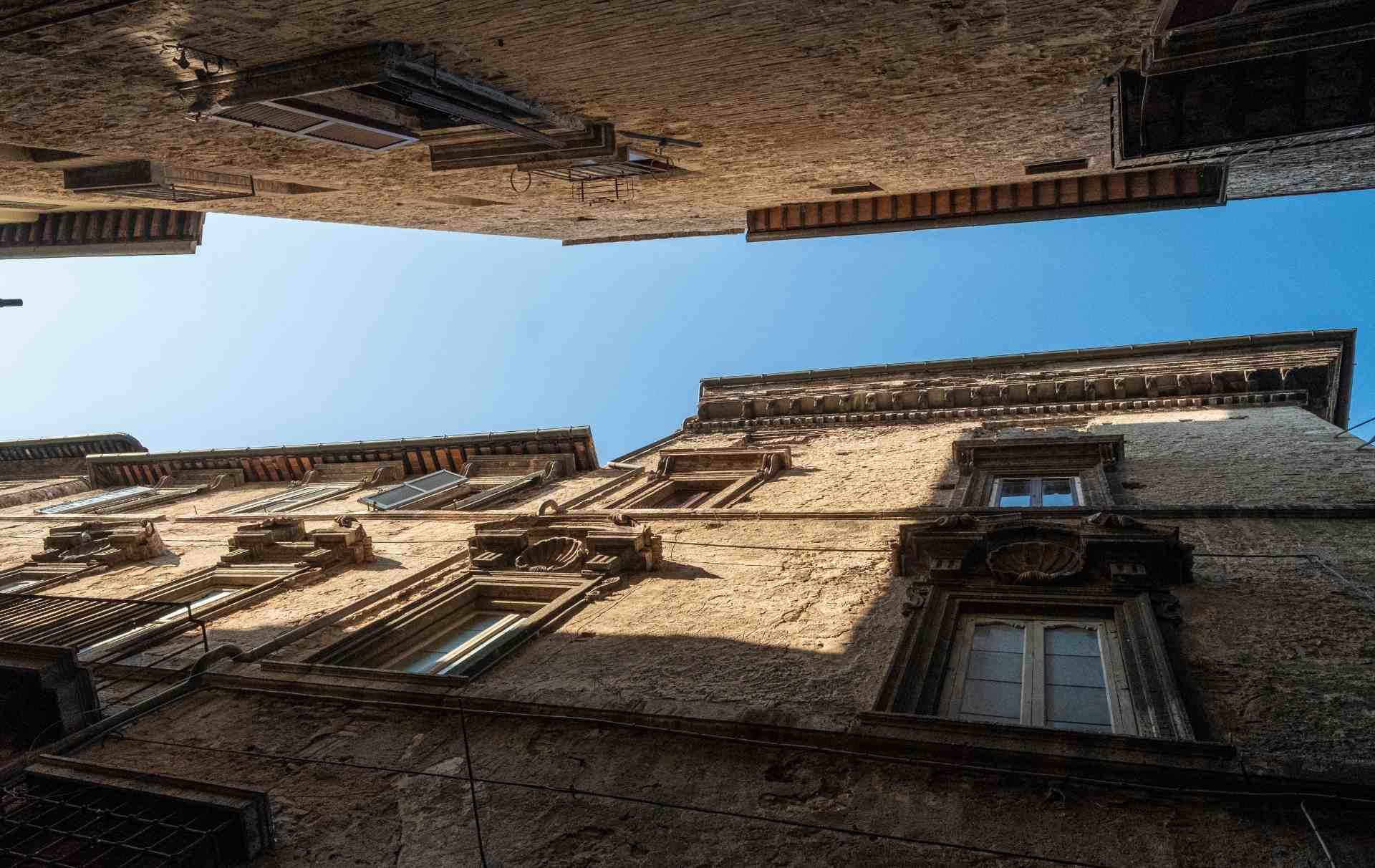The apse, in the Gothic architecture, is characterized by seven chapels inside of which the architect has wanted to link the uniqueness of the Narnese lowered arch with Gothic arch.
The seven chapels.
The chapels, covered by choir stalls, keep a relevant heritage of frescos, almost all assigned to the Maestro of Narni and to his workshop.
The chorus.
The chorus, built in 1474, is another important element of the apse.
Gift of the Cardinal of Narni Berardo Eroli, partly represents an element of disturbance to the grandeur of the environment but, as a whole, represents an artwork that deserves attention for the fineness of the inlay that looks like a delicate lace.
Worthy of note are the terminal panels, carved with the figures of the Angel Gabriel and the Madonna to represent the Annunciation. Their perfection makes them attributed to the Vecchietta who in those years sculpted the statue of Sant’Antonio abate, on which we will dwell later, and the San Bernardino who is now at the Bargello in Florence.
The canvas of the apse represents the glory of San Giovenale and it is attributed to Girolamo Troppa, painter born in Rocchette in Sabina in 1636.

The visit to the Cathedral.
Continues the visit to the Cathedral:
Go back to the Cathedral’s page.
Cathedral of San Giovenale
Piazza Cavour – 05035 Narni TR
Opening hours:
- from 8am to 12.30pm
- from 3.30pm to 7pm
It is suggested to park the car in the Suffraggio’s parking lot and go up with the elevator until Via Garibaldi reaching Piazza Cavour.
Discover Narni.
Continue to walk with us discovering what to see inside the walls of Narni.
Or discover the points of interest of Narni and of its territory:

Manini Theatre
At the end of Via Garibaldi , in front of the construction which hosted the Bank , there was the Municipal Theatre of Narni dedicated

Narni Underground
More than a complex of churches and hypogeal ambience, Narni Underground is a story: the history of its incredible discovery in 1979 and the events

Scotti Palace
Scotti Palace, is one of the most impressive civil architectures in Narni, rises on the west side of Via Mazzini, close to Santa Maria Impensole.


